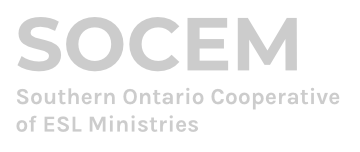by Roslyn Zehr
One of the first skills I learned as a novice ESL instructor in preparing lesson plans was how to supplement the assigned textbook with “realia”—authentic materials and objects from everyday life that can be used as teaching aids. Realia can be blended into different types of English lessons at any level and can take the form of written information, audio or video recordings, visual images, and tangible objects.
Realia in Written Form: Consider all the printed materials that the average English speaker is exposed to at home and in the community. Many of these printed items make wonderful ESL learning tools. A city map, for example, can be used in a beginning-level grammar lesson to practice prepositions of place (beside, across from, next to, etc.) or an intermediate-level listening/speaking lesson about giving directions. The next time you visit your favourite restaurant, pick up some take-out menus—these can be used with lower-level students to increase their food vocabulary or do a role play of ordering food in a restaurant. Don’t throw away those old phone books—these can help English learners practice their scanning skills in a reading lesson by finding specific information in the yellow pages. Got any outdated magazines in your recycle bin? Choose an interesting article for an advanced student to read and have an in-depth discussion about. Even those annoying magazine subscription card inserts are useful, as they can provide writing practice for ESL beginners if they fill in their personal contact information. With a little creativity, any of these and other real-world printed materials can be used to support various English lessons: for example, a brochure from the Public Health Unit, a weather statement from Environment Canada, the lyrics from a popular song, a recipe from your favourite cookbook, a library card application form, a bus or train schedule, a job ad, a real estate or classified ads listing, a sales flyer, food or clothing labels, or an owner’s manual.
Realia in Audio/Visual Form: The Internet offers a plethora of not only written information but also audio and video realia that can expose ESL learners to English in its pure (unedited) form. Pre-recorded radio and news broadcasts, instructional tutorials, music tracks, TV shows, movie clips, etc. (often available on YouTube) are useful native-like samples of English that can help students increase their listening comprehension skills, practice pronunciation, and learn about their new culture. TED Talks are another great resource on the Web that I often use in my advanced oral communication skills classes. Their cutting edge (sometimes controversial) content is great for stimulating a small group discussion, and the presenters model excellent public speaking skills (e.g., use of eye contact, hand gestures, pauses, etc.).
Other examples of visual realia include photographs, paintings, graphic artwork, cartoons, posters, and infographics. Many years ago I taught in an intensive English program in Pennsylvania, and I remember one of my colleagues had a collection of Norman Rockwell paintings that he often used in class to prompt discussion or writing activities, and teach American culture.
Tangible Objects: Realia that ESL learners can see, smell, taste, touch and manipulate help them to experience language concepts firsthand and remember new vocabulary. Beginning-level students especially can benefit from exposure to tangible objects. For instance, when teaching a lesson on fruits and vegetables or different articles of clothing, why not bring in the real thing instead of looking at a picture dictionary? Or better yet, take a trip to the supermarket or mall.
Keep in mind that realia can come from learners as well as teachers. Some of the most lively, communicative moments I remember having in the classroom involved students giving presentations with items they had brought from home: a kimono, an Arabic coffee set, origami animals, a cuatro (Latin guitar), a Chinese tea set, a traditional game, the ingredients for a traditional dish, etc. I have vivid memories of these presentations (even after 20+ years!) because authentic, real-world objects and materials make a lasting impression.
Author’s Note: The following online article, sponsored by FluentU, gives helpful tips and ideas for using authentic materials and a link to a collection of authentic, categorized videos for language learning: https://www.fluentu.com/blog/educator-english/authentic-materials-for-teaching-english/

